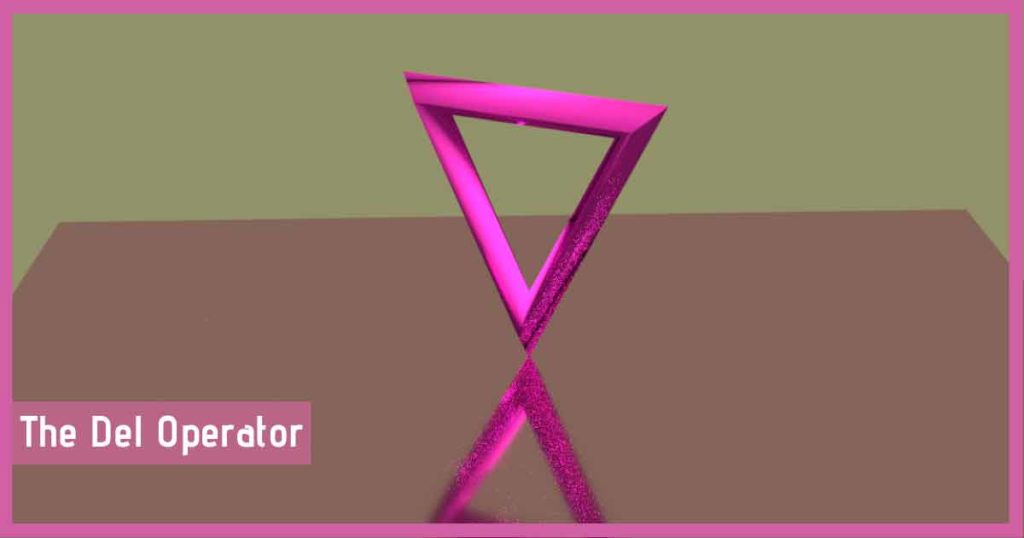Del operator is a vector differential operator which has a significant role in Electromagnetics for finding Gradient, Divergence, Curl and Laplacian.
The Del Operator
Definition for Cartesian Coordinates
In very simple words, it is a differentiation tool that is used in the vector differentiation. It is assumed to have both the partial derivatives of all the coordinate variables and unit vectors. In Cartesian coordinates it is defined as follows:-
\nabla={\overrightarrow a}_x\frac\partial{\partial x}+{\overrightarrow a}_y\frac\partial{\partial y}+{\overrightarrow a}_z\frac\partial{\partial z}Del Operator: Scalar or Vector?
As any normal mathematical operator, this operator is not a vector itself. The del operator is a vector differential operator that can be applied on the Scalar or Vector fields. The result after applying the del operator can be Scalar or Vector.
The Application
If the del operator is operated on the Scalar field then the operation is called the Gradient of that scalar field. It is the maximum spatial rate of increase of the scalar field.
With the Vector fields, it can have two operations called Divergence and Curl. The Divergence of a vector field signifies the outgoingness of the field while the Curl denotes the whirling nature. The Divergence and Curl of the vector field are represented as, \nabla\cdot\overrightarrow A and \nabla\times\overrightarrow A respectively.
Intuitively, we can say that for applying the vector operator to the vector field, we must need dot or cross product between them. And as Divergence is scalar, it is denoted with the dot product. Whereas, for the Curl which is a vector, the cross product is used.
Do not forget to check our Awesome GATE courses.


